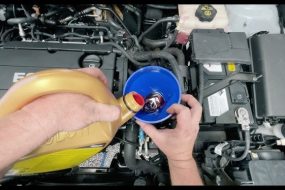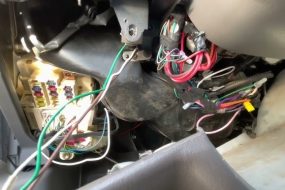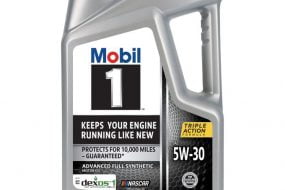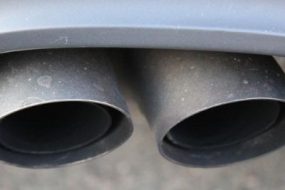
The Anti-lock Braking System (ABS) is designed to prevent your brakes from locking up as a result of too much pressure. It also helps the driver to maintain control of the vehicle and stops the car as soon as possible in case of emergencies.
However, when the brake pads go bad, it is wise to replace them to stop your car from spinning particularly on wet floors. ABS is a feature that comes with most modern vehicles. But the question is, why is my ABS light on after replacing brake pads?
The ABS light might still be on after replacing your brake pads either because you haven’t reset the code that caused the ABS light on your speedometer, or you have not actually fixed the major problem that prompted the ABS warning light.
What are Brake Pads?
Brake pads are a very important part of every vehicle. They are often referred to as the key components in the braking system of every vehicle. They are very instrumental in bringing the car to a stop when pressure is applied to the brake pedal.
Brake pads are composed of a flat piece of steel backing plates that is embedded with a friction material that is bound to the side of the brake pad that makes contact with the disc brakes.
The brake pads bring the car to a stop when the brake pedal is pressed through friction. The kinetic energy is converted to thermal energy through this friction.
When the brake pedal is pressed the brake pads are pressed onto the disc brakes which causes friction that slows down the car or stops the wheels from turning.
The number of brake pads that are required in cars differs especially in cars that are used for racing. Normally most vehicles have two brake pads attached to each disc rotor.
Considering that the wheels of a car move very fast, bringing cars or other heavy vehicles to a stop would require a lot of friction especially when they’re at very high speed, this causes the brake pads to wear off over time.
How frequently you change your brake pads depends on how often you drive your car, your braking style, and how much you have to use the brakes.
Why is My ABS Light On After Replacing Brake Pads?
Sometimes, the fault or issue with brake pads is not the only reason why the ABS light comes on, it could be a result of various other reasons.
In some vehicles, the ABS light coming on can simply indicate a fault elsewhere in the system so after you’ve replaced your brake pads and the ABS light is still on, start by checking the brake fluids reservoir because the lights sometimes come on when the brake fluids are low.
The ABS light could also come on when there’s an issue with the traction system. The traction and Anti-lock Braking Systems share a control module that interferes with each other sometimes.
What To Do If ABS Light Comes On After Replacing Brake Pads?
Many people do not know that the ABS light doesn’t only come on when either of the speed sensors detects a problem in the braking system of your car. Different things could cause the ABS light to stay on even after you have replaced the brake pads.
1. Check the ABS Fuse
Like every other electrical system, the ABS has a fuse, and sometimes the lights can stay on if the fuse has blown, you should replace the fuse and if the light is still on afterward, then you would know that there’s a problem in the ABS computer so your next stop the ABS computer.
2. Check the ABS Computer Module
The ABS computer module can stop functioning like every other electronic device so you should check it out too. The module is usually located on top of the pump motor.
If you notice that the control coil has burnt or you can hear a humming noise from the computer, then it’s time to replace the ABS computer module.
3. Check the Traction Control System
The ABS shares some important parts with the traction control system. The traction control system is designed to keep all the four wheels of your car rolling smoothly on the ground and if the traction control system detects any wheel spinning irregularly, it will cut the power off the engine until it detects when the wheels are spinning regularly again
This is possible because the ABS and traction system shares important components, they sometimes interfere with each other and this could make the ABS light come on.
4. Check if ABS and Traction Control are Off
A lot of people do not know that you have the option of switching your ABS and traction control on or off. Therefore, whenever any one of these systems has been switched off, the light comes on as a sign to warn you that these systems that are very important for your safety are off or not functioning so you can just switch it back on.
5. Check the ABS Sensor
If the ABS sensor has gone bad, it can cause the ABS light to come on even after you have replaced the pad. If the ABS sensor is bad, the best thing to do is to replace it with another one.
Consult your owner’s manual to find it if you don’t know where it’s located.
Will the ABS Light Go Off After Clearing the Error?
The ABS light will reset itself normally after the system runs a self-test and passes it. So if your ABS light remains on after fixing the supposed problem, you should run a full check to make sure that everything is perfectly fine.
If after you have done a full check and you’re sure that everything is fine, you should reset the ABS lights by disconnecting the positive cable from the battery and pressing the brake pedal down to drain the vehicle’s electrical system, and connecting the positive cable back to the battery.
If after doing this, the lights don’t go off, you should drive your car into a mechanic’s shop, they might need to connect the ABS to the under-dash connector to reset the ABS. It is however best to make use of a scanner tool to reset or clear the code.
However, in some cars, you simply need to find the DIC ( Driver’s Information Center) on the dashboard below the speedometer, find the “set” button and keep pressing it until it starts showing ABS then hold the “set” button down for about 5-7 seconds so that it will reset.
Conclusion
Generally, the ABS light doesn’t come on when there’s no fault in the vehicle so once you see the light, take some time to check what could be wrong.
Also when traveling long distances or going to places that you’re not familiar with, make sure your car is in a good condition before you embark on the journey.
You should always have spare brake pads in your car just in case anything goes wrong with the ones in use.









